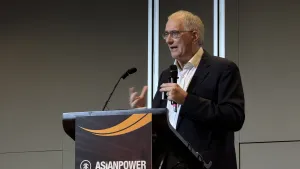Democratizing Sustainable Housing in Indonesia: A Case for Asia’s ESG Priorities
By Setiyo WibowoGlobally, buildings are responsible for 39 percent of energy-related carbon dioxide emissions
Indonesia sits at a pivotal intersection of development and decarbonization, offering an underexplored but essential lens for Asia’s ESG dialogue. With a population expected to reach nearly 329 million by 2050, the urgency of affordable, climate-aligned housing has never been greater. Yet, housing remains a blind spot in the region’s ESG frameworks—despite its vast environmental, social, and governance implications.
Globally, buildings are responsible for 39 percent of energy-related carbon dioxide emissions—28 percent from ongoing operations and 11 percent from construction and materials. In fast-urbanizing economies like Indonesia, this footprint will only grow unless the housing sector becomes a strategic part of the ESG solution.
Indonesia has committed to a 31.89 percent reduction in emissions by 2030 under its Enhanced Nationally Determined Contribution (NDC), rising to 43.20 percent with international support. However, housing is still largely absent from mainstream climate policy—a gap that represents both a missed opportunity and a systemic risk.
Recent experiments in low-emission housing provide early evidence of what’s possible. Pilots conducted across Indonesia have demonstrated that it is feasible to integrate low-impact materials, energy-efficient design, and circular economy principles into affordable housing—yielding homes that minimize energy use, waste, and water consumption. These approaches prove that sustainable housing can be cost-effective and scalable, not merely aspirational.
However, these efforts have also surfaced persistent structural barriers. Financial and regulatory incentives remain insufficient to drive widespread adoption. Many developers lack the technical capacity to implement sustainable practices, and access to certified green materials is still limited—particularly outside of urban centers. These challenges reflect broader obstacles facing ESG implementation in emerging markets, where ambition often outpaces institutional readiness.
What’s needed is a systemic, coordinated push across three key dimensions: policy, capacity, and supply chains.
First, governments must embed sustainability into national building regulations and offer clear fiscal incentives for projects meeting low-emission standards. This must include affordable housing, which has too often been excluded from green policy frameworks.
Second, capacity building is critical. Local authorities require tools and training to implement and enforce sustainable urban planning, while developers and financial institutions must be equipped to assess long-term environmental and social value. Emerging public-private initiatives are beginning to close these gaps through technical assistance and knowledge-sharing platforms.
Third, sustainable material supply chains must be strengthened. Outside major cities, the scarcity and high cost of certified green materials pose a major barrier. Ongoing efforts to establish regional supply hubs and promote domestic green manufacturing need to be scaled, with strong coordination between national and local actors, as well as the private sector.
Circular economy practices are also emerging in Indonesia’s housing sector. Verified implementations in several affordable housing developments have utilized more than 2.2 million kilograms of recycled plastic in construction, reducing emissions by an estimated 2,741 metric tons of CO₂ equivalent—comparable to planting 45,000 trees or preserving 1,100 hectares of forest for a year. These practices not only reduce embodied emissions but also generate local jobs in recycling and green manufacturing, delivering both climate and social dividends.
Across Asia, sustainable housing remains a relatively untapped ESG lever. As urbanization accelerates—particularly in South and Southeast Asia—the infrastructure decisions made today will define the region’s emissions and equity outcomes for decades to come. Yet, housing continues to receive less policy attention compared to energy or transport sectors.
Indonesia’s experience underscores that low-emission housing is more than a technological challenge—it is a governance opportunity. It requires stronger public frameworks, empowered local institutions, and coordinated finance. The International Energy Agency has called for all new buildings to be zero-carbon-ready by 2030. For Asia, achieving this benchmark will require democratizing access to sustainability—not just for the affluent, but for the millions who will shape the region’s urban future.
Sustainable housing is not a luxury feature of ESG—it’s a foundation. It delivers measurable impact across all three ESG pillars: environmental performance, social equity, and governance coordination. If Asia is to lead the world in climate-smart urban development, it must begin by making sustainable housing a shared, inclusive priority.













